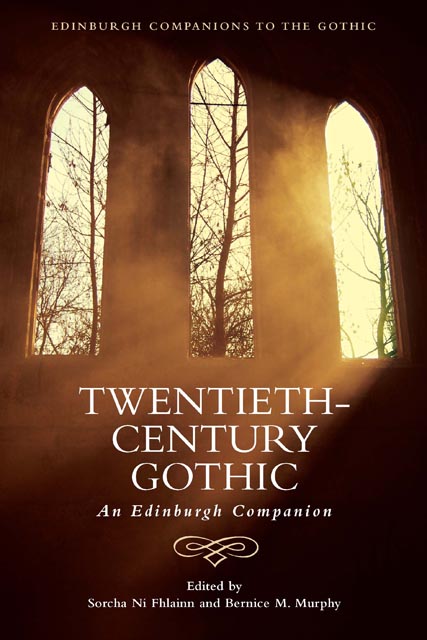3 - Gothic Modernisms
Published online by Cambridge University Press: 18 November 2022
Summary
The Gothic and modernism are two highly influential, often contested modes central to the twentieth-century imagination. From the mid-nineteenth century into the twentieth century, the Gothic was disseminated across genres, infecting literary and popular imaginations by transgressing spatial and temporal boundaries. Critical work in the field of Gothic modernisms, my focus in this chapter, recognises and explores the Gothic registers of modernist cultural production from the late nineteenth-century ‘proto-modernists’ – such as Oscar Wilde, Henry James, Vernon Lee and Joseph Conrad – onwards into twentieth-century literature, film and art. So far, in reading this body of writing, scholarly work has tended towards deploying two methods that are not mutually exclusive. The first of these is to read Gothic modernisms as being represented by the macabre and haunted turns to ‘high’ modernist aesthetics that we find in the writings of T. S. Eliot, Virginia Woolf, James Joyce and many others – and from there to assess the resonances that mod-ernism shares with the Gothic that came before it. The second method is to interrogate and explore the broader period of ‘Gothic modernity’, which Sam Wiseman suggests runs from the 1880s to the 1940s and the Second World War, by assessing the Gothic and modernism's shared spatial, technological and epistemological contexts.Whether Gothic, modernist or both, writers of the period were confronted by a rapidly changing modernity through increased urbanisation, the discovery and theorisation of the unconscious, and the emergence of global conflicts on a devastating scale. Indeed, critics recognise that a pervasive ephemerality is reflected in the literature and art of the period. The relationship between the Gothic and modernism, then, is multifaceted, and both aesthetic and contextual. The Gothic is often transformed by acts of modernist experimentation, and such transformations are visible, to give but two examples, in Virginia Woolf's dislocating ghost story ‘A Haunted House’ (1921) and in the urban carnivalesque of Djuna Barnes's Nightwood (1936). Barnes's Surrealist novel is arguably the quintessential Gothic modernist text and I turn to it at the end of this chapter.
- Type
- Chapter
- Information
- Twentieth-Century GothicAn Edinburgh Companion, pp. 49 - 63Publisher: Edinburgh University PressPrint publication year: 2022



